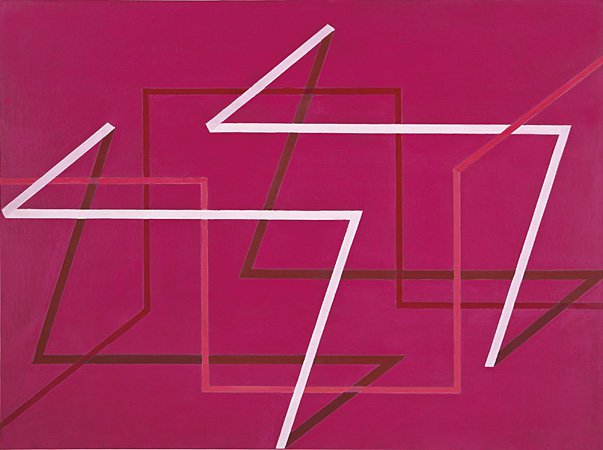Cultural Center of the Philippines
ENCYCLOPEDIA OF
PHILIPPINE ART
Perpetual Motion
1952 / Oil on wood / 91.44 x 121 cm / Artist: Constancio Bernardo / Bernardo Family collection
Bernardo’s hard-edge abstraction as seen in Perpetual Motion is a stylistic rejection of the prevailing Neo-Realist trend that dominated Philippine painting in the 1950s. After his studies at Yale University from 1948 to 1952, he pursued his mentor Josef Albers’s principle of color interaction. This theory asserts that color is not defined by itself but only in relation to another color, and that its quality would vary in terms of intensity and tonal value when set beside another color.
To Bernardo, color is concrete physical presence and, when compounded in new planar arrangements, would engage its perceiver in an objective and analytical exercise. This canvas thus presents the exacting nuances of two tints: pink on the upper half and salmon on the lower half, interplaying although hardly contrasting since each tone is as subdued as the other. The drabness is broken by the construction of diagonal lines rendered like scaffolds. The blue-black, white, and vermilion of the scaffold appears to be advancing, in contrast to the recessive pink and salmon. The tinted areas of blue-black and vermilion suggest an effect of transparent overlapping of forms.
The painting appears deceptively simple, but on closer scrutiny reveals lines interlocked at varying angles, giving an illusion of movement that folds down, opens up, clips to one side, and turns to the other in mechanical cadence. Bernardo’s geometricism reflects a scientific intellect and a disciplined hand that could be interpreted as a local aspiration for an international aesthetic of order.
Written by Imelda Cajipe-Endaya
